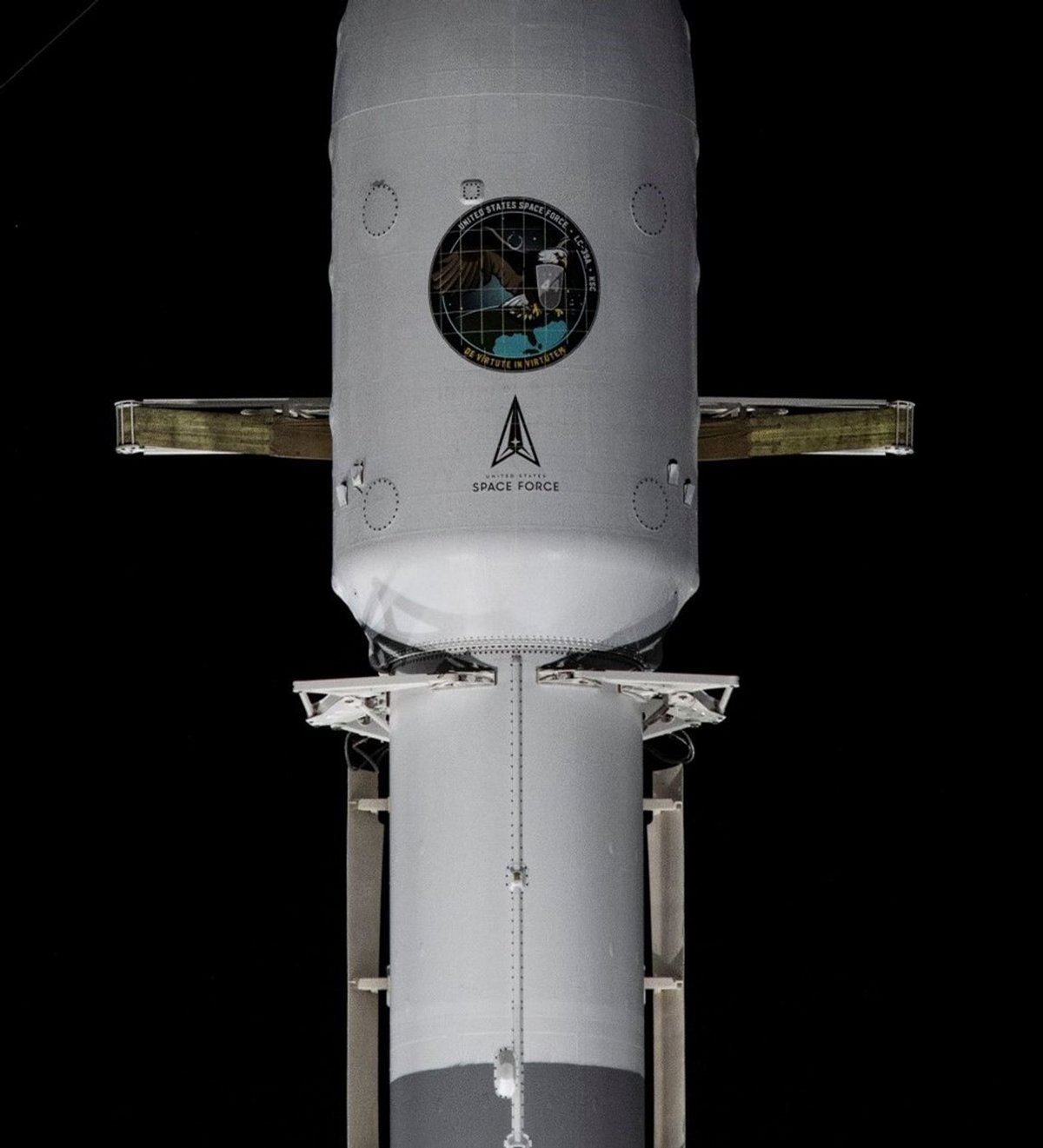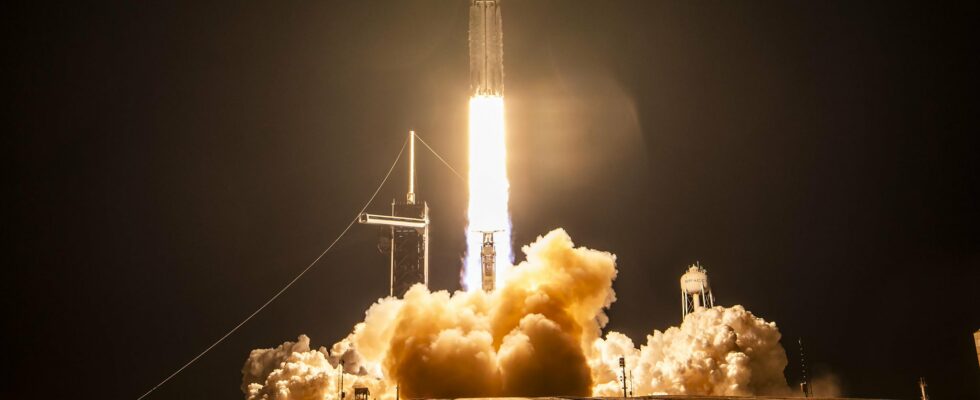A Friday like no other for SpaceX… With its last two orbital launches of 2023. But above all, a very important takeoff to take away the small X-37b shuttle into high orbit with its Falcon Heavy launcher. A success, and as usual a lot of questions about the vehicle’s mission.
The liftoff was initially scheduled to take place on December 11, but a problem with the ground installations had arisen, which delayed the takeoff of the powerful Falcon Heavy rocket. The latter even returned to its hangar for a few days, before coming out on the 28th… And this time, the countdown has come to an end! On December 29 at 2:07 a.m. (Paris), the SpaceX rocket ignited its 27 engines to leave the Kennedy Space Center and fly over Florida.
The last flights of 2023
It was almost the last SpaceX launch this year, with a Starlink flight taking off a few hours later… To end with an impressive count: 96 orbital launches of the Falcon family (including 4 Falcon Heavy) in 2023, and 100% success. Coverage of this flight made it possible to follow the impressive technical performance of the first stages, including the return and successful landing of Falcon Heavy’s two auxiliary boosters, before keeping the rest of the launch secret. And for good reason, the X-37B shuttle mission is managed by American defense.
X-37B plays a new score
The small X-37B shuttle has been around for over a decade, and it is also called OTV (Orbital Test Vehicle). This mission is the 7th in all, but there are two shuttles, which take turns and successively go into orbit when they are not being prepared in the Boeing hangars in Florida. This is therefore the 4th takeoff of this particular shuttle (No. 2), and it is a bit special. Indeed, all the previous ones took place with medium capacity launchers, Falcon 9 and “naked” Atlas V. Enough to take X-37B into low orbit, where it remained and carried out its experiments for sometimes more than two years in orbit (the record is 908 days) before returning to land autonomously on the runway of the Kennedy Space Center.
The use of Falcon Heavy shows that the Space Force and the US Air Force will test a higher, elliptical orbit to test other hardware. We also know that for several flights, the shuttle has had a service module at the rear, which helps with its propulsion, but which also contains experiments. It is dropped just before returning to Earth and disintegrated.
What capabilities for the secret shuttle?
The general public regularly attributes extraordinary capabilities to the small X-37B, which is particularly resistant and easy to maneuver, but is not designed for extreme missions… Especially since it is regularly monitored by agencies and institutes independent from the ground. We even know some of the experiences she takes in her hold! For example, NASA commissioned an experiment with different seeds to evaluate which ones have the most efficient growth (lettuce, tomatoes, onions, wheat, there are 8 species). X-37B, in its elliptical orbit, will undoubtedly test the effects of radiation on various electronic components by crossing the Van Allen belts several times and over long periods.
There may also be special optics or sensors to test before they are installed in future US defense jewels, observation of other satellites, and a game of cat and mouse.

Indeed, according to several observers and American defense officials, the launch at the beginning of the month of the small Chinese reusable shuttle (nicknamed Shenlong) is not a coincidence of timing. Will they spy on each other? It’s possible. To visit each other, it will be more difficult (their orbits are too different and it would require a lot of fuel). In any case, we now have to count on two reusable shuttles…
Source : SpaceFlight Now

2